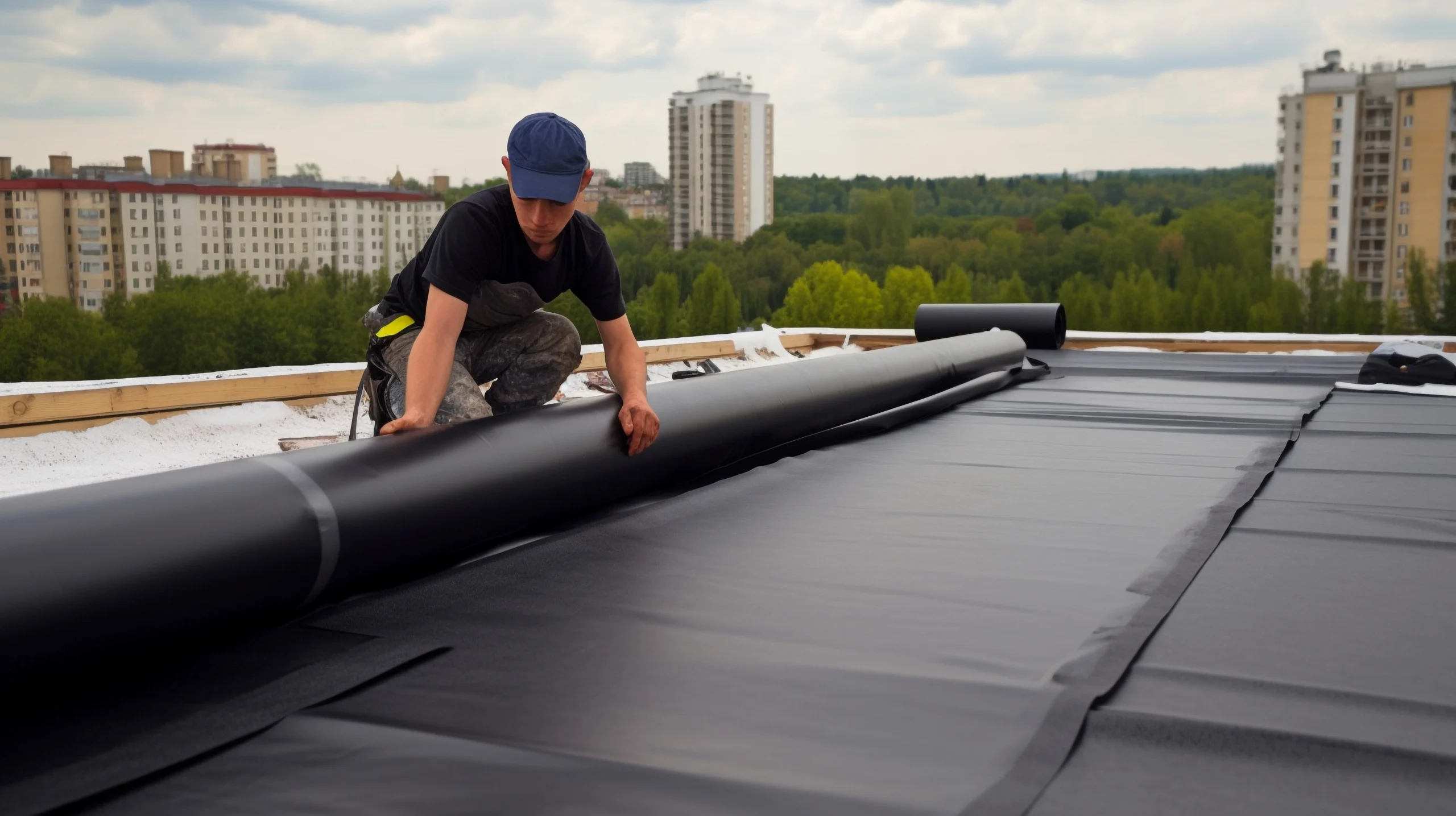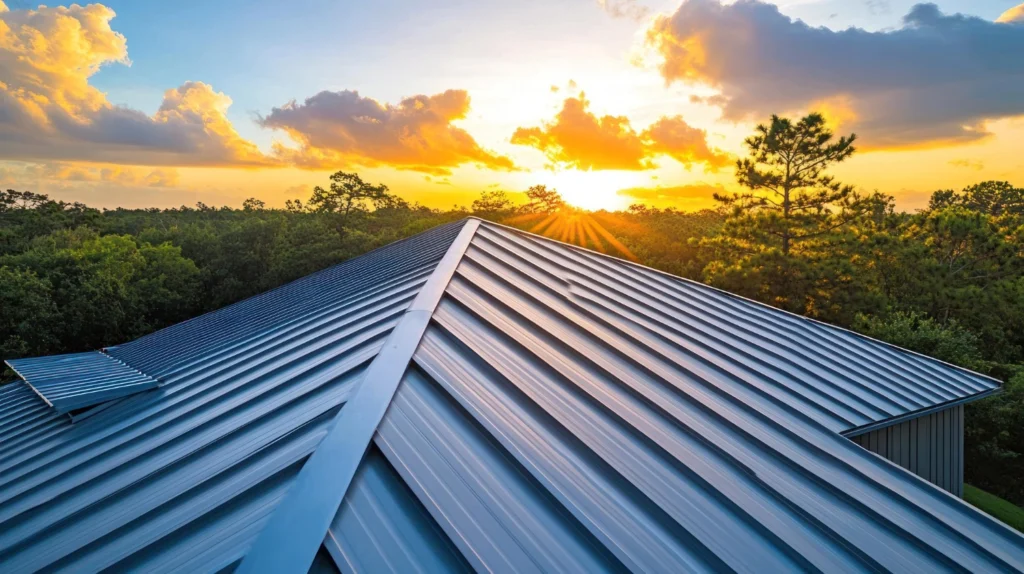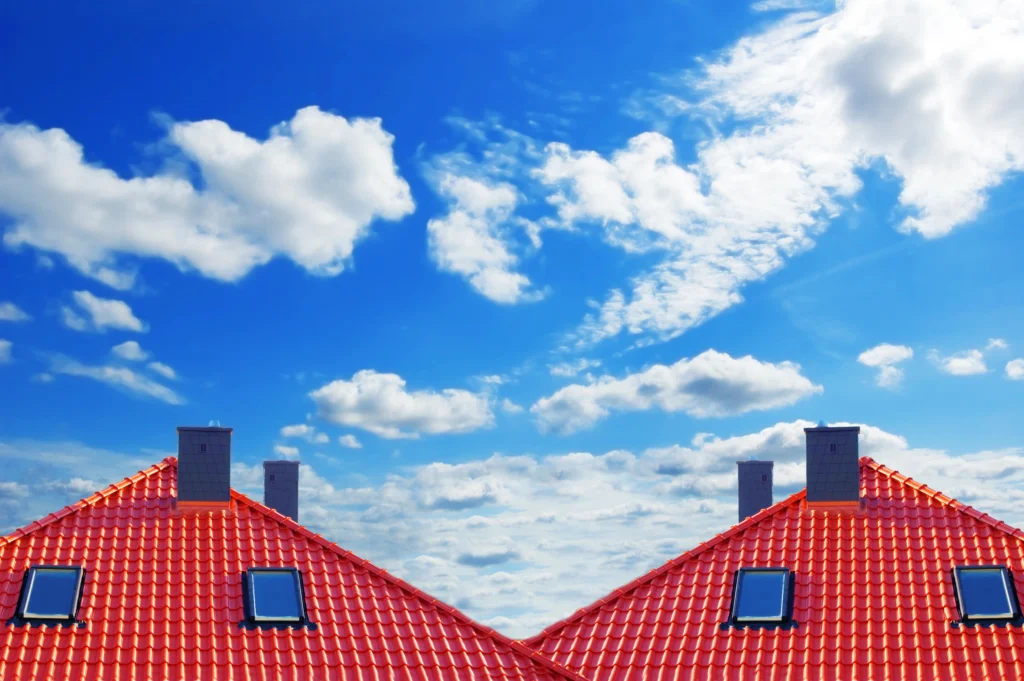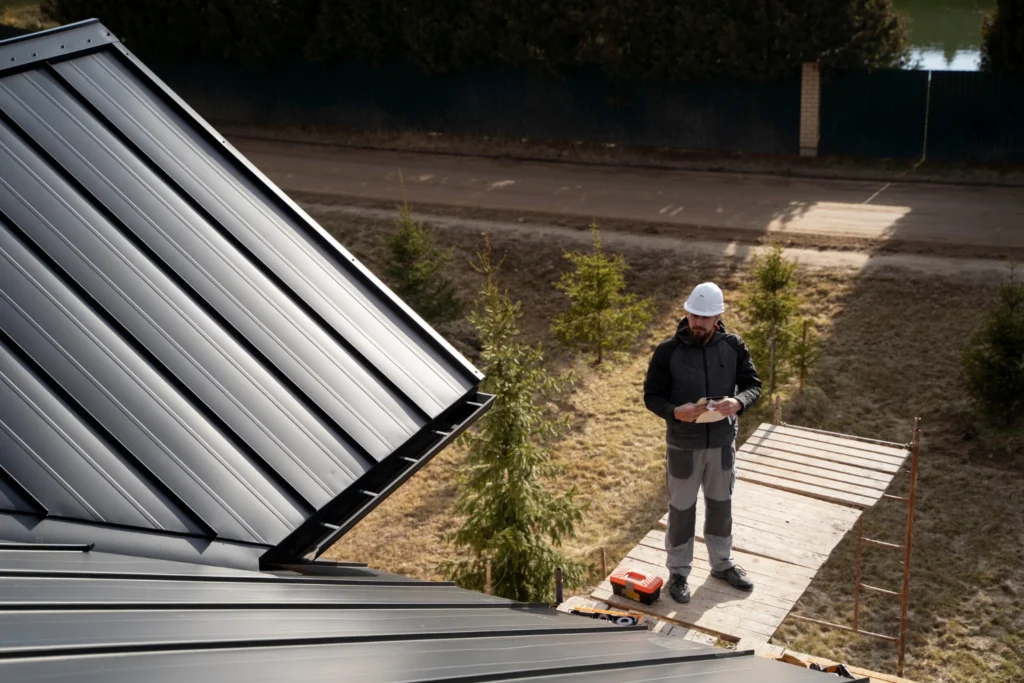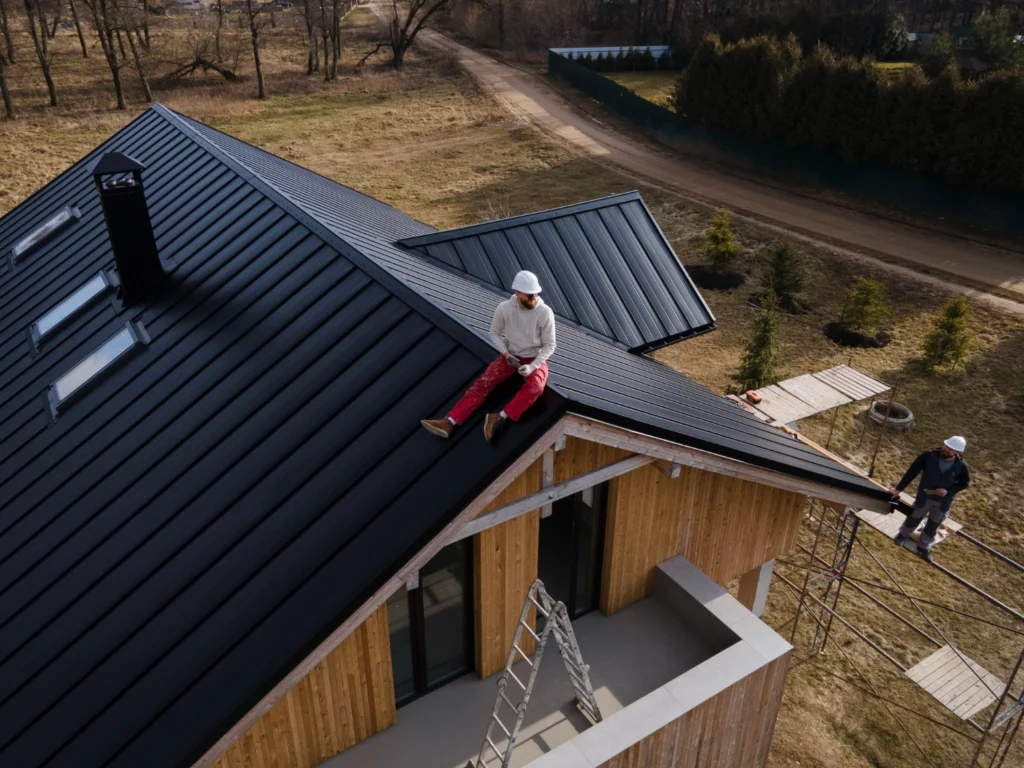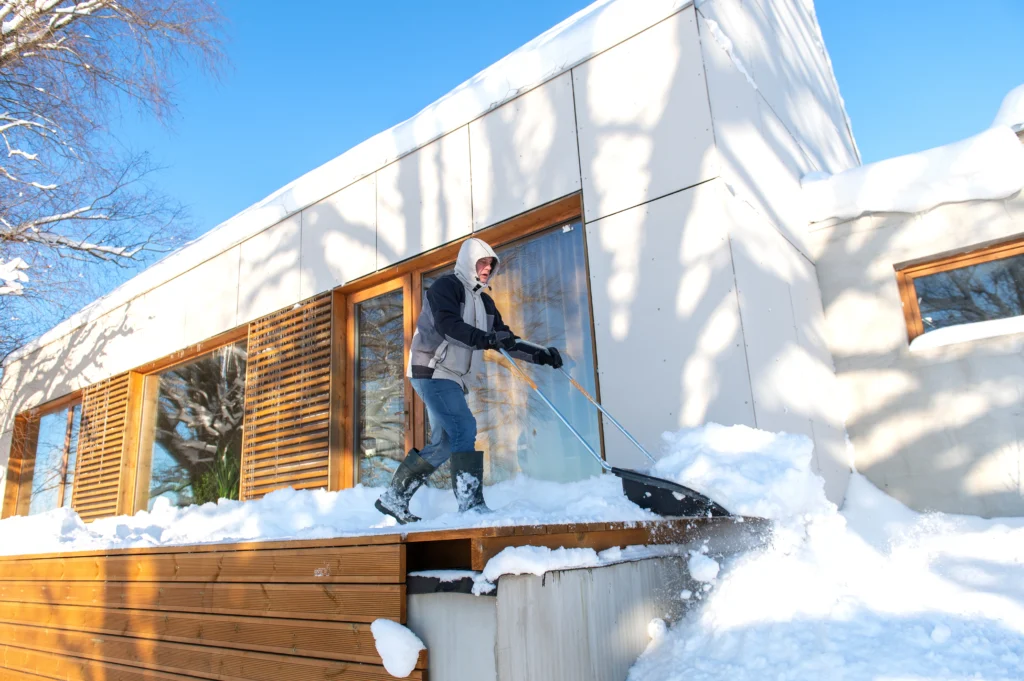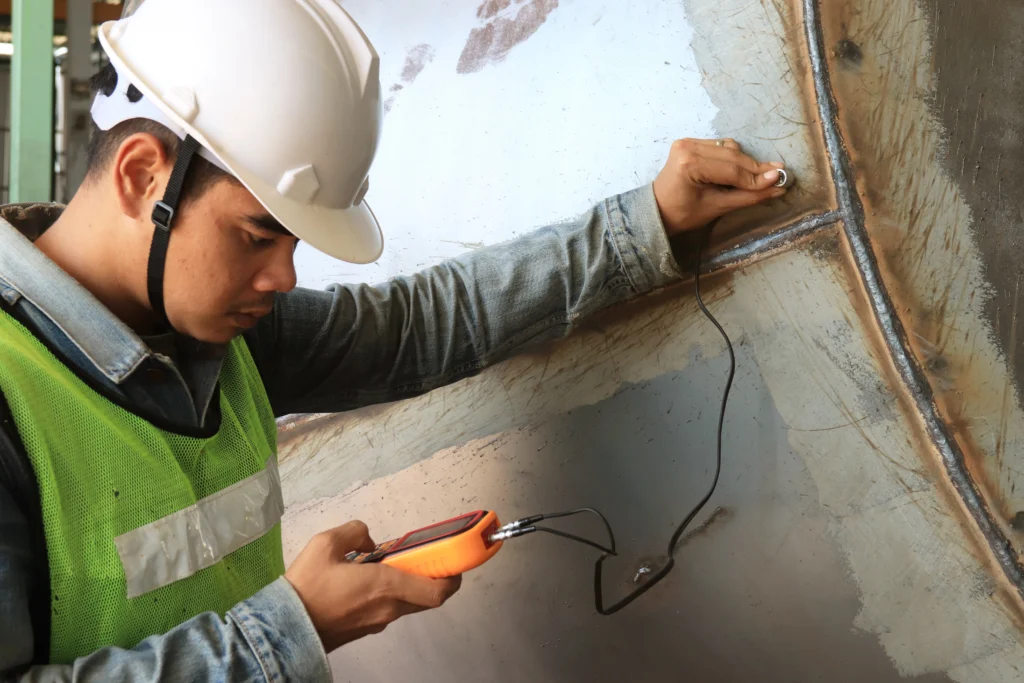For homeowners and business owners in Minnesota and Wisconsin, a flat roof presents unique challenges, especially with our harsh weather. Finding a roofing material that is durable, affordable, and long-lasting is essential. For many, the ideal roofing solution is rubber roofing. This strong and flexible option offers exceptional protection and value, making it a popular choice for everything from residential garages to large commercial buildings.
If you’re considering a new roof for your flat or low-slope structure, understanding the benefits of a rubber roofing system is the first step toward making a confident investment. At Miller’s Roofing and Siding, we believe an informed customer is a satisfied one. This guide will walk you through everything you need to know about rubber roofing, so you can decide if it’s the right choice for your property.
What Is Rubber Roofing for Flat Roofs?
Rubber roofing is a type of single-ply roofing membrane made from a synthetic rubber material known as EPDM (ethylene propylene diene monomer). Specifically designed for flat and low-slope roofs, an EPDM roof provides a seamless, waterproof barrier that protects your property from the elements.
This durable roofing membrane is known for its incredible flexibility, resilience, and cost savings. An EPDM rubber roof can withstand extreme temperature fluctuations, from scorching summer sun to frigid winter freezes, without cracking or becoming brittle. Its longevity and low maintenance needs make it one of the most reliable roofing options available today.
The Benefits of Rubber Roofing
Homeowners and commercial property owners choose rubber roofing for its blend of performance, affordability, and sustainability. When properly installed by roofing experts, an EPDM system delivers peace of mind for decades.
Durable Against Weather & Leaks
One of the greatest strengths of a rubber roofing membrane is its durability. It is highly resistant to storms, high winds, and hail. Because it is a seamless material, it eliminates the common points of failure where leaks often begin. Furthermore, it holds up exceptionally well against UV radiation and standing water, two significant challenges for any flat roof. A properly installed and maintained rubber roof ensures your home or business stays dry and protected.
Cost-Effective Installation & Maintenance
Compared to other flat roofing options, rubber roofing costs are often more affordable. The material itself is less expensive, and since it is lightweight and easy to install, labor costs can be lower. Once installed, an EPDM roof requires very little upkeep. An annual inspection is typically all that’s needed to ensure its longevity, saving you money on maintenance and repairs over its long lifespan.
Energy Efficiency & Insulation Benefits
Modern rubber roofing comes in different colors, including white rubber, which reflects sunlight and reduces heat absorption. This can significantly lower your cooling costs during the hot summer months. The material also acts as an effective insulator, helping to maintain a consistent indoor temperature year-round and contributing to overall energy efficiency. Some roof coatings can be applied to further enhance these reflective properties.
Environmentally Friendly & Recyclable
For those looking for an eco-friendly roofing option, EPDM is an excellent choice. It has a lower environmental impact during the manufacturing process compared to other materials. At the end of its life, EPDM is fully recyclable, reducing landfill waste. Its long lifespan—often 50 years or more—also means less frequent roof replacement and less material consumption over time.
Rubber Roofing vs. Other Flat Roof Materials
When selecting a roof material for a flat or low-slope roof, it’s helpful to compare your options. Here’s how rubber roofing stacks up against other common choices:
- Asphalt Shingles: While popular for sloped roofs, asphalt shingles are not suitable for flat roofs. They cannot effectively shed water on a low-slope surface, leading to pooling, leaks, and rapid deterioration.
- Metal Roofing: Metal is extremely durable and has a long lifespan, but it comes with a significantly higher upfront cost. Installation is also more complex and expensive.
- PVC & TPO Roofing: PVC and TPO are other thermoplastic, single-ply roofing membranes similar to EPDM. TPO roofing is often white and highly reflective, offering great energy efficiency. However, EPDM often has a longer track record of proven durability and is typically more resistant to puncture and tearing.
For many property owners, rubber roofing strikes the perfect balance between cost, durability, and low maintenance, making it a superior roofing solution.
Why Homeowners & Businesses Choose Miller’s Roofing
For over 30 years, Miller’s Roofing and Siding has been the trusted choice for communities across Minnesota and Wisconsin, from Duluth to Superior and beyond. We are a family-owned business that treats every project with the care it deserves.
- 30+ Years of Experience: We have provided reliable roofing solutions since 1990.
- Licensed, Bonded & Insured Crews: Our employee crews are fully certified, and we never use subcontractors.
- Premium Materials: We partner with trusted manufacturers like CertainTeed, Owens Corning, and GAF to ensure quality.
- Industry-Leading Warranties: We stand by our work, offering warranties that provide true peace of mind.
- EPA Lead-Safe Certified: Our practices meet the highest safety and compliance standards for your protection.
Applications of Rubber Roofing
The versatility of EPDM rubber makes it an ideal roofing option for a wide range of structures:
- Residential Flat Roofs: Perfect for garages, porches, sunrooms, and home additions with flat or low-slope designs.
- Commercial Flat Roofs: An excellent, cost-effective choice for office buildings, retail stores, warehouses, and other large commercial building projects.
FAQs About Rubber Roofing for Flat Roofs
How long does rubber roofing last?
When properly installed and maintained, a high-quality rubber roof can last 50 years or more. Its impressive longevity is one of its most significant advantages.
Is it safe for extreme Minnesota & Wisconsin winters?
Absolutely. EPDM is a synthetic rubber designed to remain flexible in extreme cold, preventing cracks and splits. It also withstands the weight of heavy snow and the effects of freeze-thaw cycles.
Can rubber roofing be repaired easily?
Yes. In the unlikely event of a puncture or damage, repairs are straightforward. A patch can be applied to the roofing membrane, seamlessly sealing the area and restoring its waterproof integrity.
What is the average cost of rubber roofing?
Rubber roofing costs are generally lower than materials like metal or TPO. The final price per square foot depends on the size of the roof, the complexity of the installation, and the specific EPDM material chosen. We provide free, detailed estimates to give you an accurate quote for your project.
Protect Your Flat Roof with Miller’s Roofing Today
A rubber roof is a strong, affordable, and long-lasting solution for any flat or low-slope roof. Its durability against harsh weather, low maintenance needs, and excellent value make it a smart investment for any home or business.
At Miller’s Roofing and Siding, our family is ready to protect yours. Our team of roofing experts ensures your new roofing is properly installed to provide decades of reliable performance.
Contact Miller’s Roofing today for a free estimate on rubber roofing for flat roofs. Protect your home or business with expert installation backed by decades of experience.

